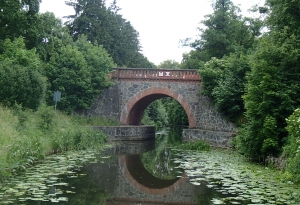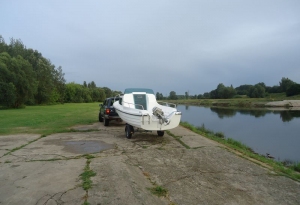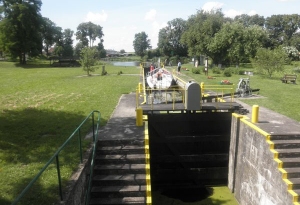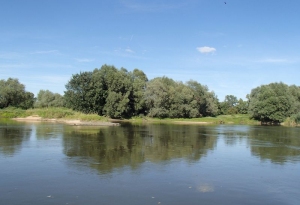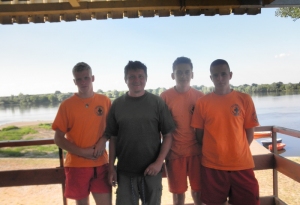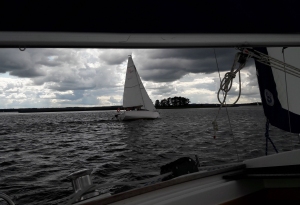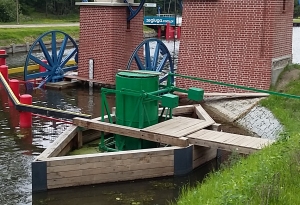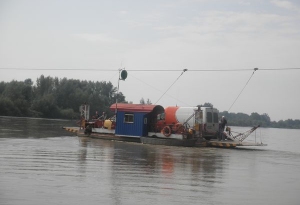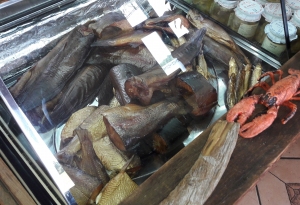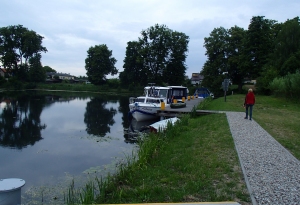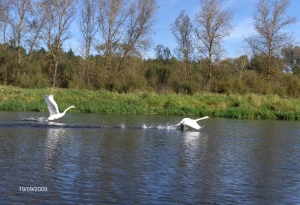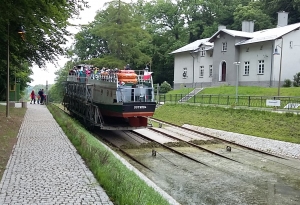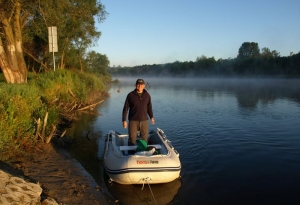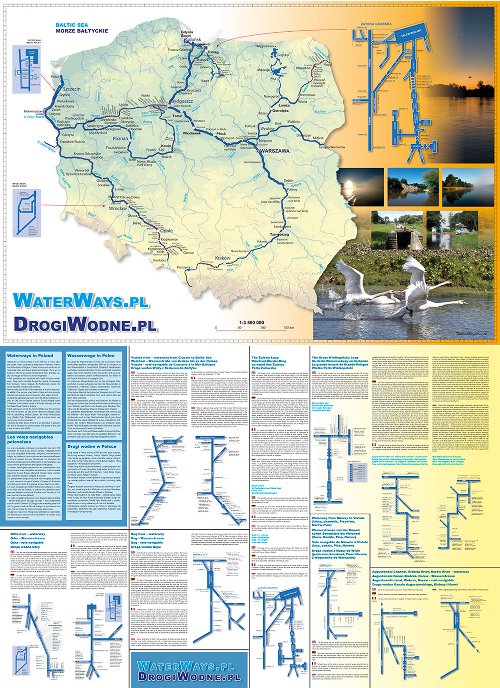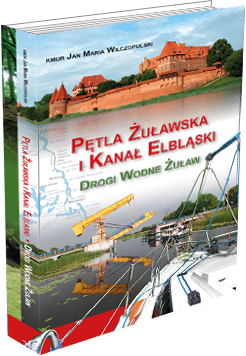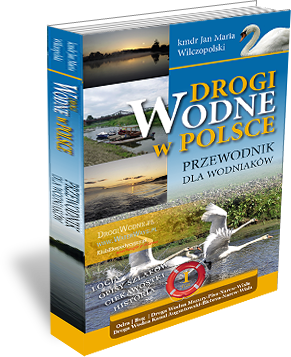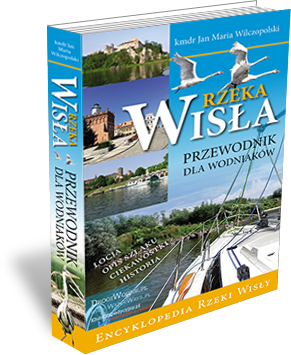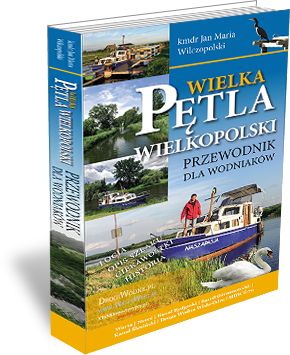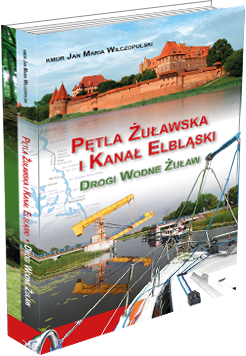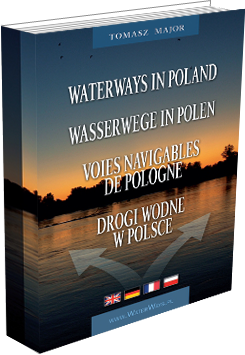
 Waterways in Poland consist of over 3500 km of rivers, lakes and canals. When compared to waterways in Germany, France, the Netherlands or Belgium, Poland’s rivers and canals are exceptionally clean and almost always picturesque. There are no barges or other large vessels moving along them, and they usually cut through corridors of luxuriant vegetation. Polish waterways are connected with major European waterways. They can be reached through the system of waterways from Germany, France, Belgium, the Netherlands, Austria, the Czech Republic, Hungary and Romania. Almost every part of the Polish waterways is home to spectacular wildlife. One can see many kinds of birds and other animals, including rare species such as beavers, white eagles and elk. Cruising the waterways can take you to the Masuria (Mazury) region, the Old Town in Gdańsk, near the Teutonic Knights’ castle in Malbork, to the historic centre of Wrocław, Warsaw, and near the Wawel Royal Castle in Kraków. Polish waterways include the Vistula (Wisła) river, the last large wild river in Europe, as well as the Oberland (Elbląski) Canal, with its astonishing inclined planes; the Great Wielkopolska Loop (Wielka Pętla Wielkopolski), with its historic locks, and many scenic rivers and canals.
Waterways in Poland consist of over 3500 km of rivers, lakes and canals. When compared to waterways in Germany, France, the Netherlands or Belgium, Poland’s rivers and canals are exceptionally clean and almost always picturesque. There are no barges or other large vessels moving along them, and they usually cut through corridors of luxuriant vegetation. Polish waterways are connected with major European waterways. They can be reached through the system of waterways from Germany, France, Belgium, the Netherlands, Austria, the Czech Republic, Hungary and Romania. Almost every part of the Polish waterways is home to spectacular wildlife. One can see many kinds of birds and other animals, including rare species such as beavers, white eagles and elk. Cruising the waterways can take you to the Masuria (Mazury) region, the Old Town in Gdańsk, near the Teutonic Knights’ castle in Malbork, to the historic centre of Wrocław, Warsaw, and near the Wawel Royal Castle in Kraków. Polish waterways include the Vistula (Wisła) river, the last large wild river in Europe, as well as the Oberland (Elbląski) Canal, with its astonishing inclined planes; the Great Wielkopolska Loop (Wielka Pętla Wielkopolski), with its historic locks, and many scenic rivers and canals.
 Die Länge der Wasserstraßen in Polen, die aus Flüssen, Seen und Kanälen bestehen, beträgt über 3500 km. Im Vergleich zu den Wasserstraßen in Deutschland, Frankreich, Niederlanden und Belgien sind die polnischen Flüsse und Kanäle besonders sauber, fast immer malerisch schön. Sie werden nicht von Lastkähnen und anderen großen Schiffen befahren. Sie fl ießen in der Regel in Korridoren aus üppigem Grün. Die polnischen Wasserstraßen sind mit den wichtigsten Wasserstraßen Europas verbunden und über die Wasserstraßen in Deutschland, Frankreich, Belgien, Niederlanden, Österreich, Tschechien, Ungarn und Rumänien zu erreichen. In fast jedem Abschnitt der polnischen Wasserstraßen trifft man auf zahlreiche Vögel und andere Tiere, auch seltene Arten wie Biber, Adler und Elche. Über die Wasserstraßen erreicht man Masuren, die Altstadt in Danzig, das Schloss des Deutschen Ritterordens in Marienburg (poln. Malbork), das Zentrum von Breslau (poln. Wrocław), Warschau und die Burganlage Wawel in Krakau (poln. Kraków). Die polnischen Wasserstraßen beschränken sich nicht nur auf die Weichsel - den letzten wilden Fluss Europas, sondern erstrecken sich auch auf den Oberländischen Kanal (poln. Kanał Oberlandzki bzw. Kanał Elbląski) mit seinen erstaunlichen Rollbergen, den Großen Wasserrundweg von Großpolen (poln. Wielka Pętla Wielkopolski) mit historischen Schleusen und einer Reihe an pittoresken Flüssen und Kanälen.
Die Länge der Wasserstraßen in Polen, die aus Flüssen, Seen und Kanälen bestehen, beträgt über 3500 km. Im Vergleich zu den Wasserstraßen in Deutschland, Frankreich, Niederlanden und Belgien sind die polnischen Flüsse und Kanäle besonders sauber, fast immer malerisch schön. Sie werden nicht von Lastkähnen und anderen großen Schiffen befahren. Sie fl ießen in der Regel in Korridoren aus üppigem Grün. Die polnischen Wasserstraßen sind mit den wichtigsten Wasserstraßen Europas verbunden und über die Wasserstraßen in Deutschland, Frankreich, Belgien, Niederlanden, Österreich, Tschechien, Ungarn und Rumänien zu erreichen. In fast jedem Abschnitt der polnischen Wasserstraßen trifft man auf zahlreiche Vögel und andere Tiere, auch seltene Arten wie Biber, Adler und Elche. Über die Wasserstraßen erreicht man Masuren, die Altstadt in Danzig, das Schloss des Deutschen Ritterordens in Marienburg (poln. Malbork), das Zentrum von Breslau (poln. Wrocław), Warschau und die Burganlage Wawel in Krakau (poln. Kraków). Die polnischen Wasserstraßen beschränken sich nicht nur auf die Weichsel - den letzten wilden Fluss Europas, sondern erstrecken sich auch auf den Oberländischen Kanal (poln. Kanał Oberlandzki bzw. Kanał Elbląski) mit seinen erstaunlichen Rollbergen, den Großen Wasserrundweg von Großpolen (poln. Wielka Pętla Wielkopolski) mit historischen Schleusen und einer Reihe an pittoresken Flüssen und Kanälen.
 Les voies navigables polonaises représentent plus de 3 500 kilomètres de cours d’eau, lacs et canaux. Comparativement aux voies navigables allemandes, françaises, néerlandaises et belges, les rivières et canaux polonais sont exceptionnellement propres et presque toujours pittoresques. La navigation des péniches et autres grosses embarcations y est inexistante. Leur cours traverse généralement des régions verdoyantes. Le réseau hydrologique polonais est en communication avec les principales voies navigables européennes: il est accessible depuis les réseaux fl uviaux allemand, français, belge, néerlandais, autrichien, tchèque, hongrois et roumain. Sur pratiquement chaque tronçon de voie navigable polonaise, on peut rencontrer un grand nombre d’oiseaux et d’animaux rares tels que le castor, le pygargue à queue blanche ou l’élan. Les voies navigables permettent d’atteindre la Mazurie, le coeur de la vieille ville de Gdańsk, le château des chevaliers teutoniques de Malbork, le centre de Wrocław ou de Varsovie, le château royal de Cracovie (Wawel). Les voies navigables polonaises ne se réduisent pas à la Vistule – dernier grand fl euve sauvage d’Europe – mais comprennent aussi le canal d’Oberland (d’Elbląg) et ses étonnants plans inclinés, la grande boucle de Grande-Pologne et ses écluses classées, tout un réseau de rivières et canaux pittoresques.
Les voies navigables polonaises représentent plus de 3 500 kilomètres de cours d’eau, lacs et canaux. Comparativement aux voies navigables allemandes, françaises, néerlandaises et belges, les rivières et canaux polonais sont exceptionnellement propres et presque toujours pittoresques. La navigation des péniches et autres grosses embarcations y est inexistante. Leur cours traverse généralement des régions verdoyantes. Le réseau hydrologique polonais est en communication avec les principales voies navigables européennes: il est accessible depuis les réseaux fl uviaux allemand, français, belge, néerlandais, autrichien, tchèque, hongrois et roumain. Sur pratiquement chaque tronçon de voie navigable polonaise, on peut rencontrer un grand nombre d’oiseaux et d’animaux rares tels que le castor, le pygargue à queue blanche ou l’élan. Les voies navigables permettent d’atteindre la Mazurie, le coeur de la vieille ville de Gdańsk, le château des chevaliers teutoniques de Malbork, le centre de Wrocław ou de Varsovie, le château royal de Cracovie (Wawel). Les voies navigables polonaises ne se réduisent pas à la Vistule – dernier grand fl euve sauvage d’Europe – mais comprennent aussi le canal d’Oberland (d’Elbląg) et ses étonnants plans inclinés, la grande boucle de Grande-Pologne et ses écluses classées, tout un réseau de rivières et canaux pittoresques.
 Drogi wodne w Polsce to ponad 3500 km rzek, jezior, kanałów. Na tle dróg wodnych Niemiec, Francji, Holandii, Belgii, polskie rzeki, kanały są wyjątkowo czyste, niemalże zawsze malownicze.
Drogi wodne w Polsce to ponad 3500 km rzek, jezior, kanałów. Na tle dróg wodnych Niemiec, Francji, Holandii, Belgii, polskie rzeki, kanały są wyjątkowo czyste, niemalże zawsze malownicze.
Brak na nich ruchu barek i innych dużych statków. Płyną najczęściej w korytarzach bujnej zieleni. Polskie drogi wodne są skomunikowane z najważniejszymi drogami wodnymi Europy. Na polskie drogi wodne dotrzemy przez niemiecką sieć dróg wodnych z Niemiec, Francji, Belgii, Holandii, Austrii, Czech, Węgier i Rumunii. Na niemalże każdym odcinku polskich dróg wodnych spotykamy mnóstwo ptaków i zwierząt, także rzadkich, jak bobry, bieliki i łosie. Drogami wodnymi dotrzemy na Mazury, na starówkę w Gdańsku, pod zamek krzyżacki w Malborku, do centrum Wrocławia, Warszawy i pod zamek królewski (Wawel) w Krakowie. Polskie drogi wodne to nie tylko Wisła – ostatnia dzika wielka rzeka Europy, ale także Kanał Oberlandzki (Elbląski) z jego niesamowitymi pochylniami, Wielka Pętla Wielkopolski z zabytkowymi śluzami i szereg malowniczych rzek oraz kanałów.
Przewodnik został wydany w bardzo estetycznej formie. Format: 12,5x20,5cm, 120 stron.


